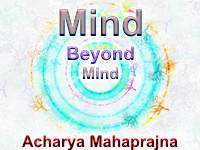
Some people complain that the practitioners of Yoga are idlers. The truth, however, is that the practitioner has to employ almost superhuman energies, so much so that he becomes physically and mentally exhausted. He may, sometimes, even die of exhaustion. Hard sadhana often produces physical ailments, because it needs the expending of enormous energy. Even a little hard intellectual labour produces irritating heat in the body. The heat generated in the course of sadhana produces unbearable physical and mental strain.
Dhyana also involves the expending of a lot of energy. The more the exertion, the more the amount of energy to be expended. The practitioner cannot arrive at a state of thoughtlessness without such an exertion. The successful completion of sadhana is a Herculean task.
The third psychic centre is located in the throat. It is called the Visuddhi Cakra It is connected with desires, subconscious tendencies and predilections. They can be subdued and controlled by activating the Visuddhi Cakra. It cleanses and purifies the mind and sublimates the desires.
The fourth psychic centre is the Nabhi Cakra or the navel. It is the seat of fire and heat. It produces vigour. Concentration on this centre activates the subconscious mind. The Visuddhi and the Nabhi Cakras have to be activated simultaneously; otherwise there may be serious complications. They produce vigour, store energy and pacify subconscious tendencies.
The heart is also a very important psychic centre. It is next to the brain in importance. Whether the brain or the heart is the seat of the soul has been a long drawn controversy. According to Ayurveda, the heart is the seat of the soul. The terms Caitya Purusa, Hrdaya Purusa etc. have often been used to describe the seat of the soul. In popular devotional songs also the heart is said to be the seat of the soul. It occupies the central position in the body. Life depends on the functioning of the heart. It comes to an end as soon as the heart has ceased to function. It circulates blood in the body. Blood is life. The brain is the implement of thinking. The heart is the instrument of emotive activities. Concentration on the heart turns our entire energy inwards, and that is why it occupies an important place in sadhana.
There is no agreement among the authorities as to the number of psychic centres in the body. Some believe them to be six, others seven and yet others eight. In my opinion there should be more than eight.
The acupuncture technique of treating diseases speaks of some seven hundred vital points in the body. The current of consciousness passes through all these points. Activating these points can cure many kinds of disease. The vital points are mysterious points. Consciousness manifests itself through them. The Chinese came to discover these points in the course of their investigations in medicine. They are also important from the point of view of sadhana.
The Muladhara Cakra is situated at the lower end of the spinal cord. It is a psychic centre and occupies an important place in sadhana. It also generates electric currents. It is also the storehouse of all the energy generated in the body.
There is a method of testing whether the mind has become concentrated. As soon as you begin to concentrate, the tissues and fibres in the lower parts of the body begin to become alert. The practitioner feels that they are being attracted from above. This is the test of the concentration of the mind. The concentrating mind is connected with the tissues and fibres of the body. During concentration electric currents in the body begin to rise upwards. The more the concentration, the greater will be the contraction in the body. The practitioner can thus go on testing whether the mind is being concentrated. Contraction in the lower parts of the body is a symptom of the concentration of the mind on some centre of the body. This means a change in the direction of the flow of the electric current in the body. The more the concentration, the stiffer will become the upper parts of the body. It is like the functioning of the roots of a tree. The stronger the roots, the healthier will become the upper parts of the tree. Concentration of the mind results in strengthening the energy centres in the upper parts of the body. It is, therefore, desirable to concentrate on the Muladhdra.
Let us now consider the subtle body, which is very important in sadhana. Where from do the desires, predilections and subconscious tendencies come into the conscious mind? Their source does not lie in the gross body. They come from the subtle body and manifest themselves in the conscious part of the mind through the brain. We cannot perceive the subtle body because it remains hidden beneath several covers. The practitioner has to do a lot of exertion in order to perceive the subtle body. He cannot only perceive his own subtle body; he can also perceive the subtle bodies of others. We can see auras around our own as well as other bodies.
Here I would like to mention a small experiment. If some body comes to you while you are meditating, look at him for a minute or two and then close your eyes. You should keep your eyes wide open when you see him. In doing so you will see a glow of light, this glow is the aura around the body of the visitor. It is in this way that we can see our own as well as others' subtle bodies. What you see is the Taijasa replica of the visitor even while your eyes are closed.
It is, therefore, necessary to understand the gross as well the subtle body and how the former is influenced by the latter. By intercepting the vibrations of the subtle mind, you can change the direction of its workings. Acharya Mahaprajna
Acharya Mahaprajna

